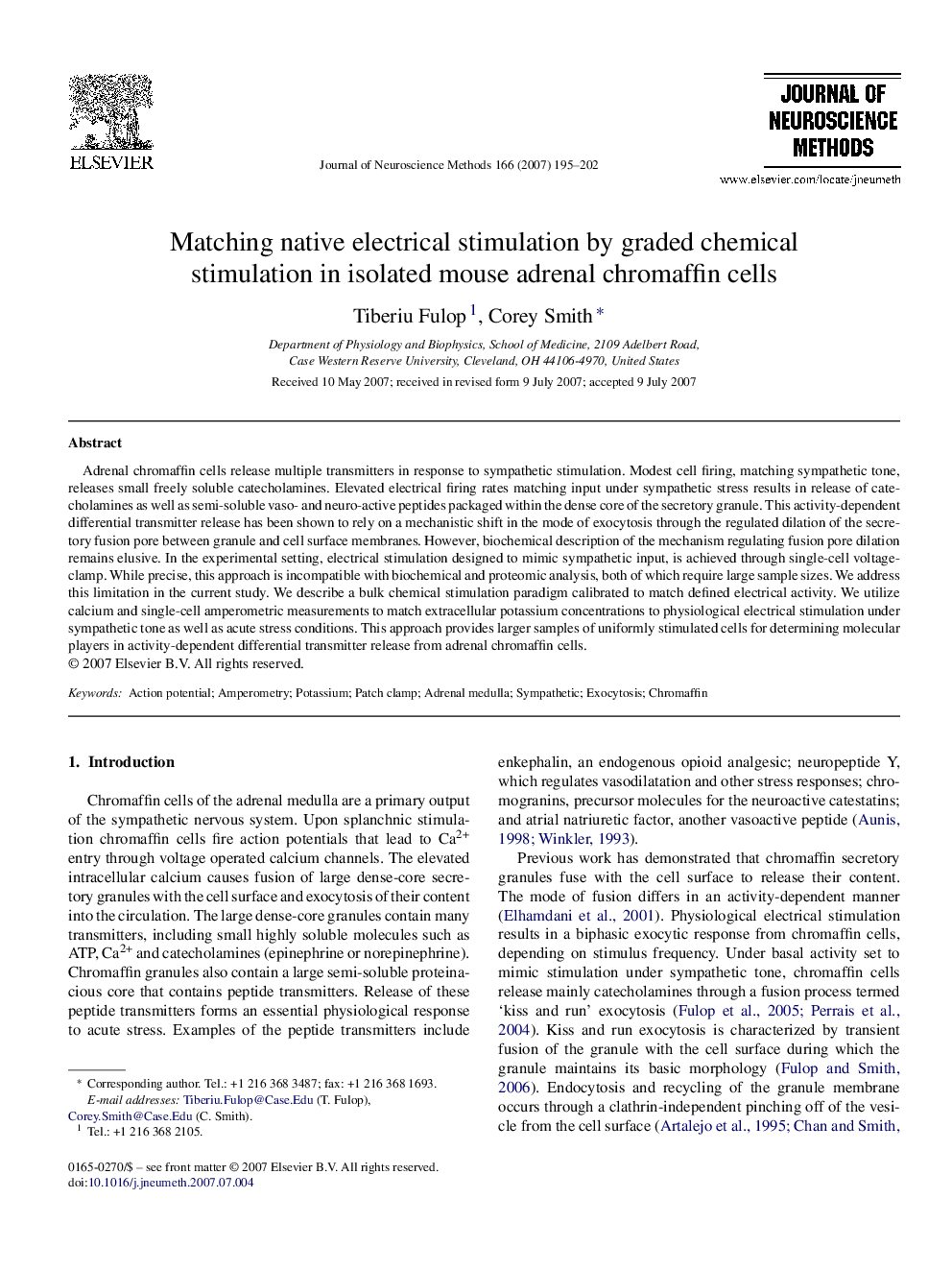| Article ID | Journal | Published Year | Pages | File Type |
|---|---|---|---|---|
| 4336530 | Journal of Neuroscience Methods | 2007 | 8 Pages |
Adrenal chromaffin cells release multiple transmitters in response to sympathetic stimulation. Modest cell firing, matching sympathetic tone, releases small freely soluble catecholamines. Elevated electrical firing rates matching input under sympathetic stress results in release of catecholamines as well as semi-soluble vaso- and neuro-active peptides packaged within the dense core of the secretory granule. This activity-dependent differential transmitter release has been shown to rely on a mechanistic shift in the mode of exocytosis through the regulated dilation of the secretory fusion pore between granule and cell surface membranes. However, biochemical description of the mechanism regulating fusion pore dilation remains elusive. In the experimental setting, electrical stimulation designed to mimic sympathetic input, is achieved through single-cell voltage-clamp. While precise, this approach is incompatible with biochemical and proteomic analysis, both of which require large sample sizes. We address this limitation in the current study. We describe a bulk chemical stimulation paradigm calibrated to match defined electrical activity. We utilize calcium and single-cell amperometric measurements to match extracellular potassium concentrations to physiological electrical stimulation under sympathetic tone as well as acute stress conditions. This approach provides larger samples of uniformly stimulated cells for determining molecular players in activity-dependent differential transmitter release from adrenal chromaffin cells.
